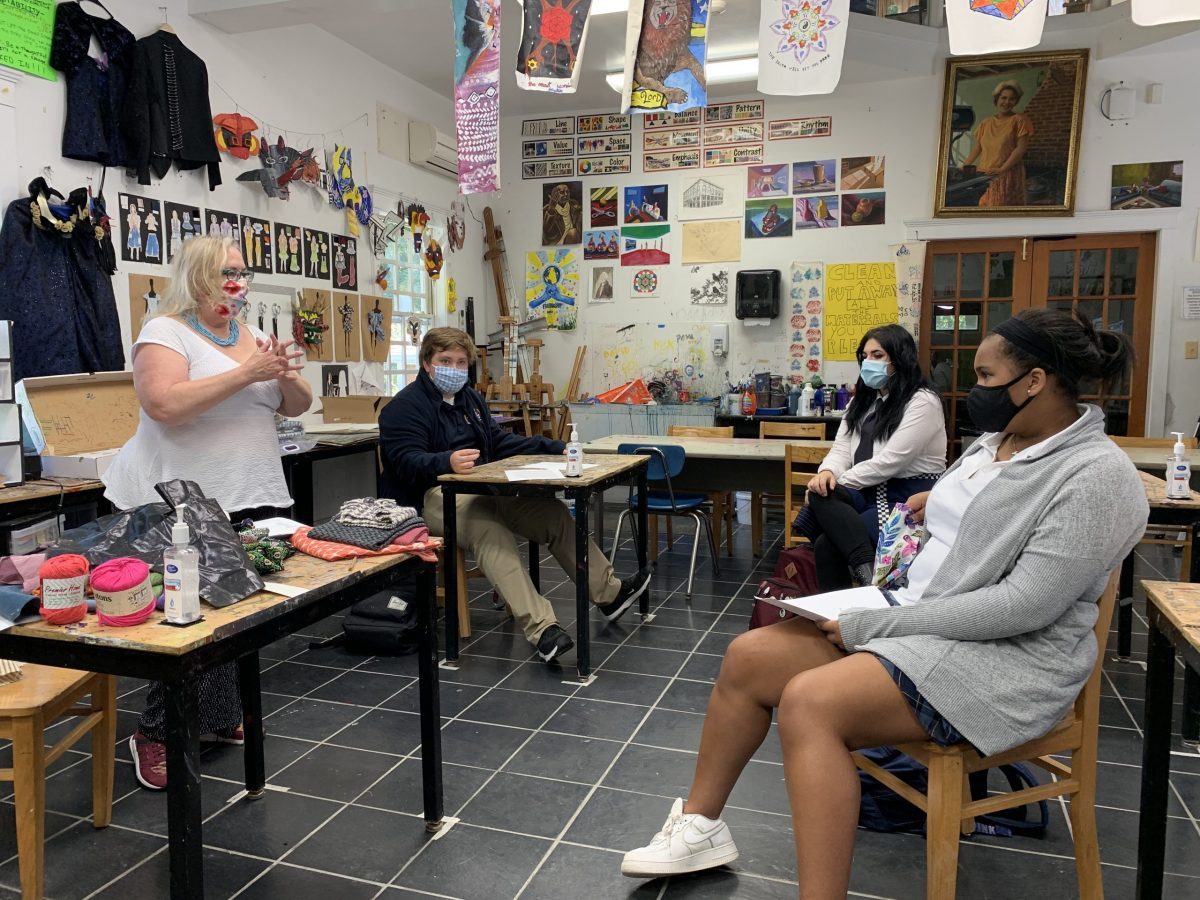 Storm King’s Fashion Design class has been learning about fibers and fabrics as they put together their first creations this semester. One of their first design challenges was to make a dress out of fibrous material or paper. The young designers used recycled paper, coffee filters, and other interesting materials for their projects. According to art teacher Ms. Liggett, the purpose of the exercise was to learn how to manipulate various two-dimensional materials into three-dimensional forms utilizing texture and space. “By exploring how to manipulate different materials, the class discovers and practices ways to manipulate fabric for future projects.”
Storm King’s Fashion Design class has been learning about fibers and fabrics as they put together their first creations this semester. One of their first design challenges was to make a dress out of fibrous material or paper. The young designers used recycled paper, coffee filters, and other interesting materials for their projects. According to art teacher Ms. Liggett, the purpose of the exercise was to learn how to manipulate various two-dimensional materials into three-dimensional forms utilizing texture and space. “By exploring how to manipulate different materials, the class discovers and practices ways to manipulate fabric for future projects.”
To enhance their class lessons, SKS’ Business Office Coordinator Mrs. Syvertsen, who is also an avid sewer, gave the class an interactive lesson on fabric fibers. During her presentation, the students learned the differences between man-made fibers and natural fibers, and how to tell them apart. The class also discussed the advantages and disadvantages of designing with different fabrics, and factors such as the use of the garment, cost, and sustainability.

During the interactive discussion, the students examined samples of different fabrics and discussed their respective uses. One example was silk. “Silk thread is very strong, much more so than cotton thread,” explained Mrs. Syvertsen. “However, silk strands are so fine that it takes a lot of silk to make one yard of material. That is one of the reasons why silk is very expensive. Silk also takes dye much better than other fibers and rarely fades. In the past, how much silk a person wore was a sign of status. The demand for silk opened up the world for trading as we know it today.”

Ms. Liggett and Mrs. Syvertsen agree that a solid knowledge of fibers and fabrics is important while creating new designs. “Knowing and understanding how different fabrics act is important before the actual sewing begins,” continued Mrs. Syvertsen. “For example, if you’re making a circle skirt that flows, you would lean towards a thinner fabric like cotton, rayon, or charmeuse. If you were making a blazer, you would lean towards a heavier, more structured fabric like wool, double knit, or gabardine.”
The class is using what they’ve learned while creating their first fabric and clothing designs, including dresses made from colored newsprint, coffee filters, anime cartoon clippings, and other colorful and interesting materials. “Ms. Liggett has asked me to visit the Fashion Design room again at the end of the semester to talk about fabric weaving, fabric dyeing, and do a demonstration on spinning yarn. I can’t wait to see what this creative group of students comes up with next,” continued Mrs. Syvertsen.

